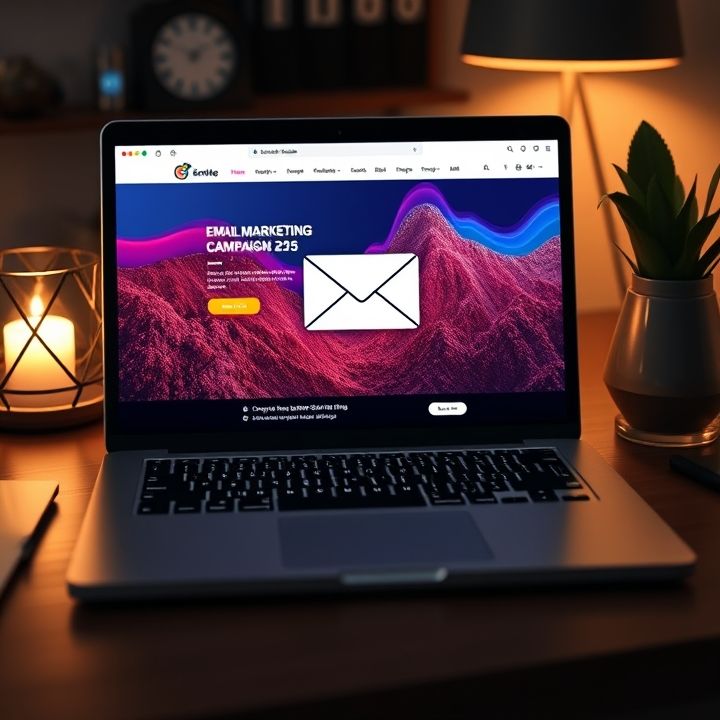Table of Contents
- Introduction
- Segmenting Your Audience for Personalized Content
- Crafting Compelling Subject Lines to Increase Open Rates
- Incorporating Valuable and Relevant Information
- Utilizing a Clear and Engaging Writing Style
- Including Social Proof and Testimonials
- Implementing A/B Testing to Optimize Content
- Ensuring Mobile Responsiveness and Accessibility
- Analyzing Subscriber Feedback for Continuous Improvement
- Conclusion
- Frequently Asked Questions
Introduction
In a world where digital communication reigns supreme, mastering the art of email marketing can be your golden ticket to unlocking unparalleled engagement with your subscribers. But how can you ensure that your emails not only reach your audience but also captivate them and inspire action? The secret lies in the strategies you employ to enhance your email campaigns. Prepare to delve into a realm of effective techniques that can transform your email marketing endeavors.
Here’s a sneak peek into the critical elements we’ll be exploring:
| Strategy | Benefit |
|---|---|
| Personalization | Boosts subscriber engagement by making emails relevant to individual users. |
| Segmentation | Ensures your messages reach the right audience, maximizing impact. |
As you continue reading, you’ll unearth insights that not only increase your open rates but also drive conversions and foster strong relationships with your subscribers. Get ready to skyrocket your subscription engagement with our top strategies!
Segmenting Your Audience for Personalized Content
Segmenting your audience is a crucial strategy in delivering personalized email content that resonates with each subscriber. By dividing your email list into specific groups based on demographics, behaviors, and preferences, you can tailor your messages to meet the unique needs and interests of each segment. This approach not only enhances engagement but also boosts the overall effectiveness of your email campaigns.
To begin with, identify key characteristics that define different segments of your audience. This may include age, gender, location, purchase history, or engagement level. Once you have defined these segments, you can craft targeted content that speaks directly to each group’s interests and requirements. For instance, if one segment has shown a preference for a certain product category, you can design emails that highlight new arrivals or exclusive offers in that category.
Moreover, employing dynamic content blocks within your emails allows for further personalization, ensuring each subscriber receives content most relevant to them. Utilizing tools such as A/B testing can also help refine your segmentation strategy, as it allows you to test different approaches and determine what resonates best with each segment. Ultimately, effective audience segmentation fosters a more meaningful connection with your subscribers and enhances their overall experience.
Crafting Compelling Subject Lines to Increase Open Rates
Crafting compelling subject lines is a crucial strategy for enhancing the open rates of your email campaigns. A well-crafted subject line acts as a first impression, enticing recipients to click and engage with the content inside. The effectiveness of a subject line often hinges on its ability to spark curiosity while clearly conveying the email’s value. Personalization, such as using the recipient’s name, can significantly increase appeal, making the email feel tailored just for them. Questions or intriguing statements can pique interest, prompting readers to seek answers by opening the email.
Additionally, keeping subject lines concise yet impactful is important due to the character limit on most email platforms. Incorporating urgency, such as limited-time offers or deadlines, can also drive immediate action. However, it is crucial to avoid misleading or spammy language, as this can harm credibility and trust. By testing different approaches and analyzing open rates, you can refine your strategies to discover what resonates best with your audience. Ultimately, a thoughtful subject line serves as a gateway to valuable content, encouraging subscribers to engage and interact further with what you have to offer.
Incorporating Valuable and Relevant Information
Incorporating valuable and relevant information into your email content is essential for maintaining the engagement and trust of your subscribers. Start by understanding your audience’s needs and preferences through surveys or feedback forms to tailor your content effectively. Providing insightful content that addresses current trends or issues within your industry can help demonstrate your expertise while keeping your subscribers informed. Additionally, leveraging segmentation allows you to target specific segments of your audience with information most pertinent to them, enhancing personalization and relevance.
Utilize data analytics to track which types of content resonate most with your readers, and iterate on successful elements. Incorporate actionable tips, how-to guides, or exclusive offers that provide tangible value, and ensure your language remains concise and clear to facilitate easy comprehension. Always stay true to your brand’s voice to maintain consistency, and consider integrating multimedia elements such as videos or infographics to make the content more engaging. By continuously adapting and refining your approach based on feedback and analytics, your email content will remain a valuable resource for your subscribers, encouraging long-term loyalty.
Utilizing a Clear and Engaging Writing Style
Utilizing a clear and engaging writing style is crucial for ensuring that your email content is both valuable and useful to your subscribers. An effective email should begin with an attention-grabbing subject line that summarizes the essence of your message encouraging recipients to open the email. Once opened, your email content should be concise and straightforward yet comprehensive enough to communicate your key messages effectively. Avoid using jargon or overly complex language that might confuse your audience; instead opt for simple words that cater to a broad reader base.
Employing an engaging tone can greatly captivate your subscribers, making the email feel more personal and relatable. Incorporating storytelling elements can help to illustrate your points and make your content memorable. Break down your content into shorter paragraphs and use bullet points where applicable to enhance readability and allow subscribers to skim through the information quickly. Visual elements like images and infographics can also aid in conveying messages in a more appealing and digestible manner.
Finally, a clear call-to-action (CTA) should guide your subscribers on what to do next, whether it’s clicking a link, signing up for an event, or simply replying to the email. This ensures that your emails not only deliver value but also prompt subscriber engagement.
Including Social Proof and Testimonials
Incorporating social proof and testimonials into your email content is a powerful strategy for enhancing its value and utility to subscribers. Social proof serves to build trust and credibility by showcasing real experiences from customers who have benefitted from your products or services. It leverages the psychological tendency of individuals to be influenced by the actions and approvals of others.
Testimonials offer personal accounts from satisfied customers, highlighting not only the benefits of your offerings but also providing relatable stories that potential customers can connect with. By embedding snippets of positive feedback directly within your emails, readers are more likely to perceive your brand as reliable and valuable.
Including elements such as customer reviews, ratings, and case studies can also serve to back up any claims made in the email, reducing skepticism and increasing engagement. Visuals such as images of customers or video testimonials can further enhance this effect, providing a more dynamic and engaging way for subscribers to absorb the information. This not only increases the perceived value of the email content but also motivates potential buyers to take action.
Implementing A/B Testing to Optimize Content
Implementing A/B testing is a strategic approach to optimizing email content and enhancing its value to subscribers. A/B testing, also known as split testing, involves sending two variations of an email to a small segment of your audience to determine which performs better. This process allows marketers to experiment with different elements such as subject lines, email copy, visuals, and call-to-action buttons. By analyzing the engagement metrics like open rates, click-through rates, and conversion rates, you can identify which version resonates more with your audience.
For example, varying the subject line can significantly impact open rates, while changes in call-to-action wording or placement can influence click-through rates. It’s important to test one element at a time to accurately assess its impact. Moreover, A/B testing is not a one-time activity but a continuous process of refinement, as subscriber preferences and behaviors evolve.
Overall, A/B testing empowers marketers to make data-driven decisions, ensuring that the content delivered to subscribers is aligned with their interests and preferences. This approach not only improves the effectiveness of email campaigns but also enhances subscriber satisfaction and engagement, ultimately contributing to achieving business goals.
Ensuring Mobile Responsiveness and Accessibility
Ensuring mobile responsiveness and accessibility in email content is crucial in today’s digital landscape, where a significant portion of users read their emails on mobile devices. Responsive design ensures that your content automatically adjusts to fit different screen sizes, providing a seamless experience whether your subscriber is using a smartphone, tablet, or desktop computer. Utilizing a single-column layout and appropriately sized images and text can help achieve this flexibility.
Additionally, accessibility considerations are vital to cater to subscribers with disabilities. This involves using a clear and easy-to-read font, providing sufficient color contrast, and including alt text for images, which assists screen readers in describing visual elements to visually impaired recipients. Implementing semantic HTML tags, such as headings, lists, and tables, helps in structuring the content for better comprehension.
Moreover, it’s beneficial to test emails across various devices and email clients to ensure consistent visibility and functionality. Tools like Litmus or Email on Acid can assist in previewing and troubleshooting potential issues. By prioritizing mobile responsiveness and accessibility, you enhance the inclusivity and engagement of your email marketing efforts.
Analyzing Subscriber Feedback for Continuous Improvement
Analyzing subscriber feedback is a crucial strategy for ensuring your email content remains valuable and relevant. By actively seeking and reviewing feedback, you can gain insights into what resonates with your audience and areas that might require improvement. One effective way to gather feedback is through surveys and polls, which provide direct insights into subscriber preferences and satisfaction levels.
Additionally, monitoring engagement metrics such as open rates, click-through rates, and unsubscribe rates can help pinpoint which content is most beneficial to your subscribers. This data-driven approach can highlight patterns and trends that inform future content strategies.
Another method to analyze feedback is by monitoring social media mentions and direct interactions. Often, subscribers may express their opinions about your emails outside of direct feedback channels. Listening to these conversations can provide valuable context to their preferences. Furthermore, implementing A/B testing can help you experiment with different content elements to determine what is most effective.
By consistently analyzing and incorporating subscriber feedback, you can refine your email marketing strategy to better meet the needs of your audience, fostering a more engaged and loyal subscriber base.
Conclusion
Unlocking the secret sauce of email success requires a blend of strategic insights and precise execution. By segmenting your audience, you ensure that each subscriber receives content tailored specifically to their preferences, elevating both engagement and conversion rates. Crafting compelling subject lines is pivotal to capturing attention and prompting email opens, while incorporating valuable and relevant information builds trust and credibility among your readers.
Furthermore, utilizing a clear and engaging writing style ensures your messages are not only understood but also enjoyed, keeping subscribers eager for more. Including social proof can significantly enhance your content’s persuasiveness by showcasing testimonials and real-world success stories. Additionally, continuous improvement through A/B testing and subscriber feedback analysis helps refine your strategies and adapt to the ever-evolving digital landscape.
In a world where first impressions are often made on small screens, ensuring mobile responsiveness and accessibility is essential to reach diverse audiences effectively. Collectively, these strategies form a comprehensive guide to mastering email marketing, driving subscriber engagement to new heights, and achieving long-term loyalty. Embrace these tactics to transform your emails from mundane to memorable, fostering lasting relationships with your subscribers.

